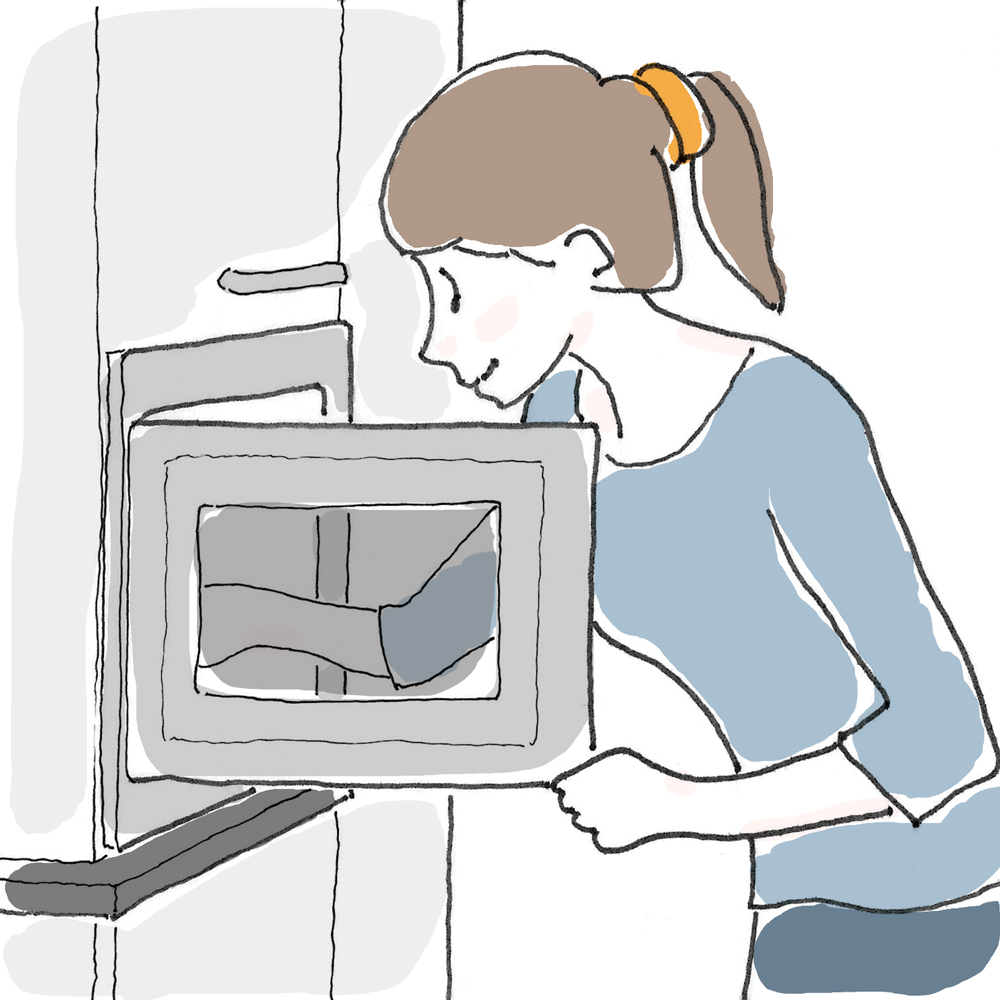
As we guide clients through kitchen design decision-making, we ask a lot of questions. Understanding your cooking routines and family needs as well as your budget and space constraints helps us narrow down the best options for your project. And microwave ovens are no exception. They are commonly overlooked, and if you don’t plan for one at the beginning of your kitchen remodel, trying to squeeze one in later only wreaks havoc. While selecting a microwave oven may seem simple, there are more options than most people realize.
What to consider
When choosing a microwave oven for your kitchen, ask yourself the following questions:
- How often do you use your microwave? Do you use it multiple times a day? Or is it only rolled out when your Uncle Mike needs to reheat his coffee?
- Does it need to be front and center? Do you need immediate and frequent access to the microwave? Or could it occupy a remote part of your kitchen?
- What do you cook in your microwave? Do you use it to warm up leftovers? Or do you use it for significant cooking tasks? If you use it for significant tasks, what is the largest baking dish you expect to put in it?
- How much space do you have? Do you have a tiny kitchen, where space is at a premium and every square inch matters? Or do you have the luxury of a large kitchen, where you can dedicate space to an appliance that may not be used much?
- What is your budget? Microwave oven prices range from $150 for a countertop model to over $2,500 for a high-end, built-in model. What are your priorities?
OK then. What are my options?
Countertop microwave
Everyone knows what a countertop microwave is and that its biggest drawback is that it takes up space on your countertop. However, they are inexpensive and great for college dorms, rental apartments, basement kitchenettes and ADU’s. But most clients do not want one taking up space on the counter in their new kitchen.
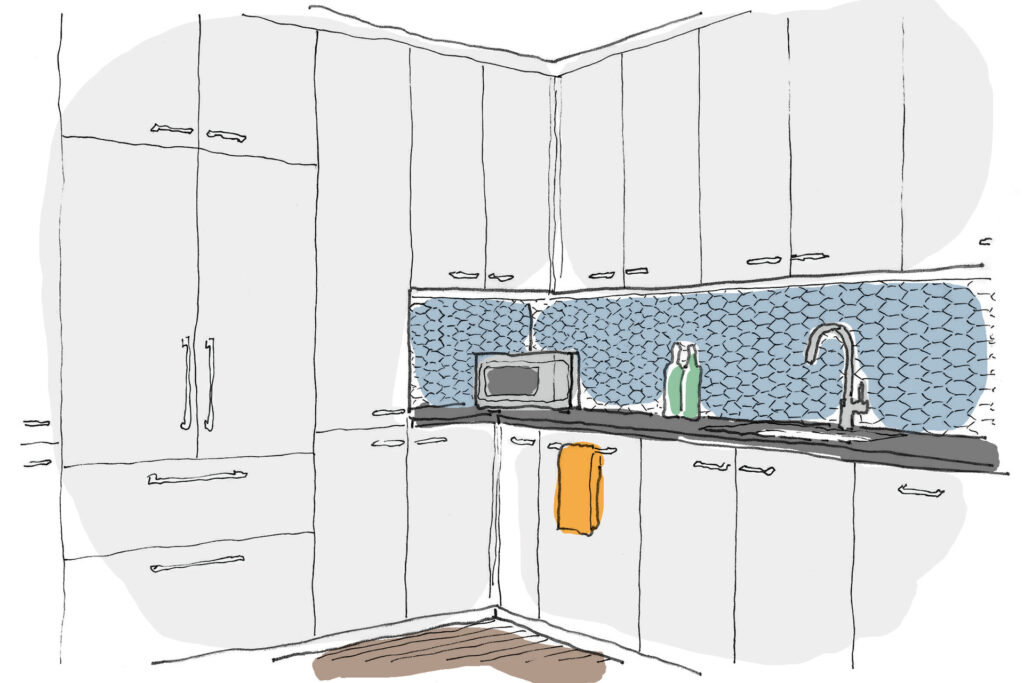
To keep it off your counter, you could set a countertop microwave on a shelf or inside a little cubby. Or, if you don’t use a microwave very often, consider tucking a countertop model inside a walk-in pantry. But note: countertop microwaves do not have a secondary cooling fan. So make sure they have plenty of air circulation around them. Otherwise they’ll burn out fast.
Microwave-hood combo
Anyone who has rented an apartment has likely used a microwave-hood combo. Mounted above a range, these appliances combine both a microwave oven and a kitchen ventilation hood. However, Derek Berg of Eastbank Appliances in Portland, Oregon, recommends avoiding them for several reasons. First, in order to safely reach the microwave, the appliance needs to be located no higher than 54” above the floor. But that cramps the space of the range below, making it difficult to use large pots. Further, access to the microwave can be dangerous due to its location over a heated surface. Finally, the ventilation portion of these appliances is usually underpowered and ineffective.
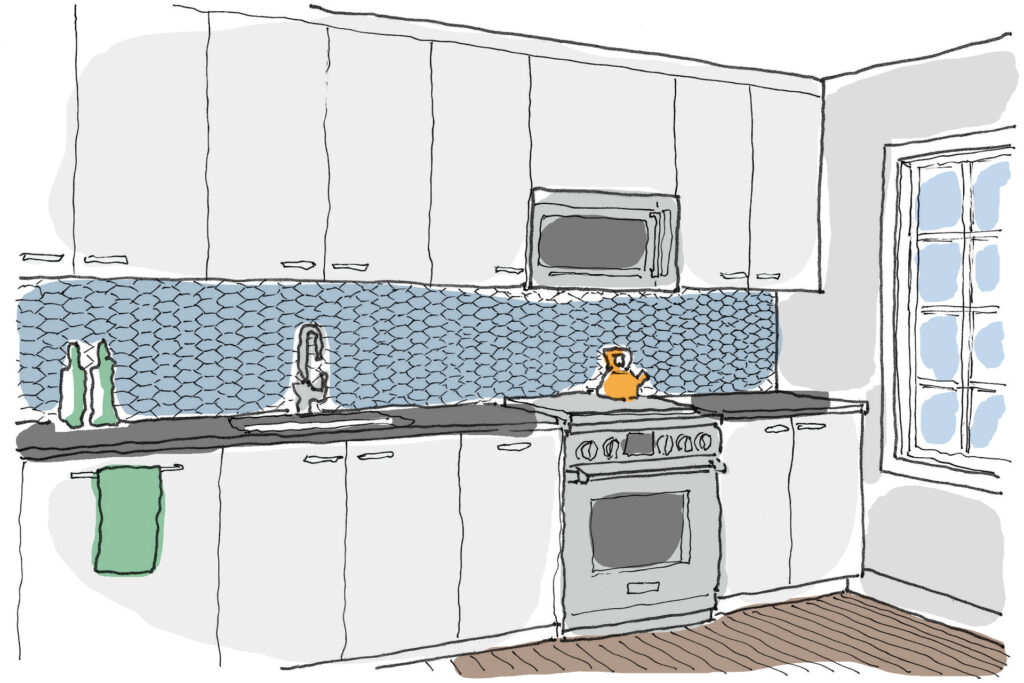
Berg also states, “Microwave-hood combos fail faster than other microwaves. Since they’re mounted above a cooking appliance and constantly exposed to heat, their components literally burn out. They’re fine if you have low expectations for your microwave, never cook, space is terribly tight or you’re building an ADU or rental apartment. But otherwise, avoid them at all costs.”
Built-in microwave oven
Similar to a wall oven, a built-in microwave is ‘built into’ the kitchen cabinetry. Typically installed 44-54″ from the floor to the bottom of the unit, built-in microwaves have doors that hinge at the side or bottom and offer a sleek, seamless aesthetic. However, this slick looks comes with a price—built-in microwaves are one of the most expensive ways to incorporate a microwave into your kitchen.
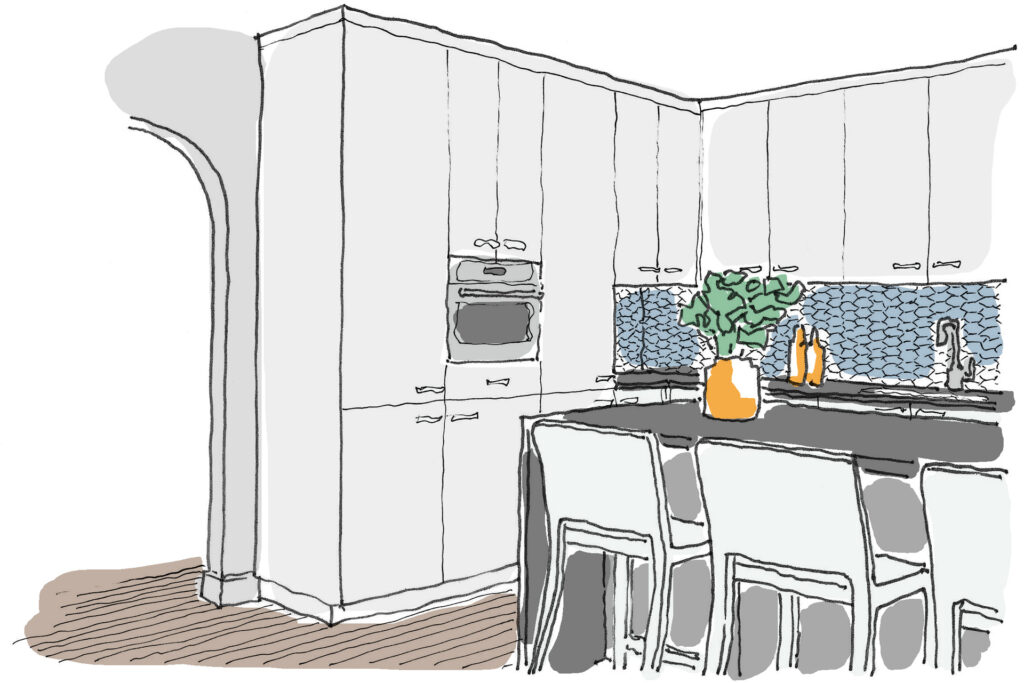
Built-in microwaves come in 24, 27 and 30″ widths, since they are often stacked above a 24, 27 or 30″ wall oven. The cabinet depth must be at least 24″.
You can see an example of a built-in microwave in our Scout’s House project.
Combination wall oven and microwave
A combination wall oven and microwave is an all-in-one unit with an upper microwave, a lower conventional oven and one control panel. They are available in 27 or 30″ widths. While these may seem like a great space-saving idea, Berg states, “DO NOT buy one. The microwave will die first and you’ll be left with a large appliance repair bill.”
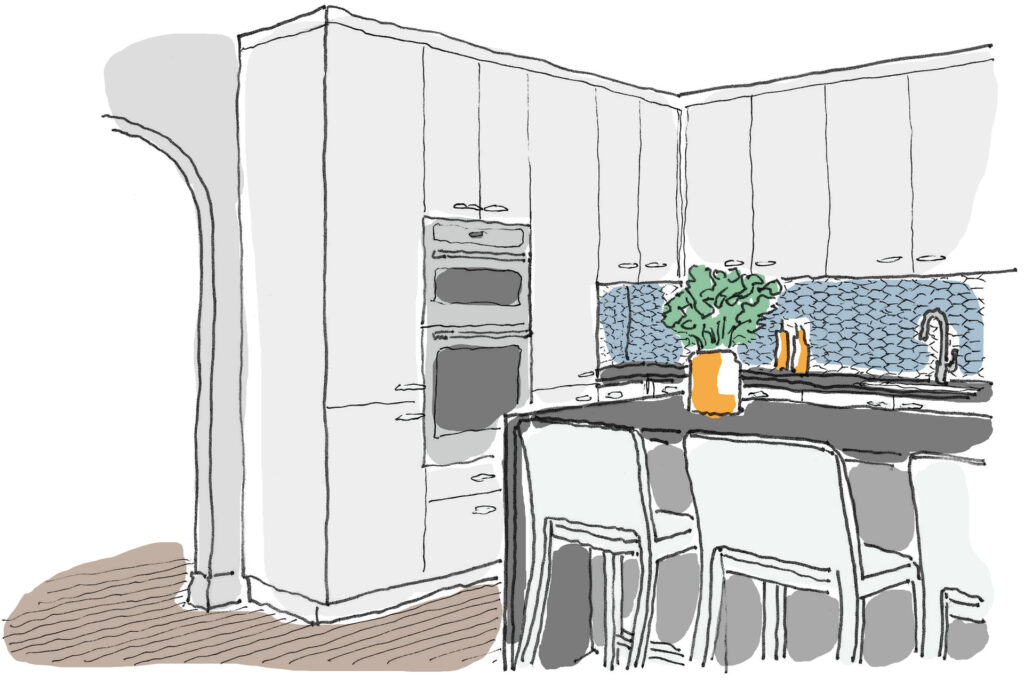
It’s better to stack a wall oven below with a separate built-in microwave above. If the microwave breaks, you only have to replace it—not the oven as well. Berg says that the only time Eastbank sells a combo wall oven and microwave is for replacement. They do not recommend them for any type of new construction.
Microwave oven with trim kit
If you want the built-in look but don’t have the budget, a microwave with trim kit may be a good solution. A microwave designed for use with a trim kit is essentially a countertop unit with an additional cooling fan. The secondary fan keeps the unit cool, preventing it from burning out when installed into kitchen cabinetry. Once installed in the cabinetry opening, a trim kit fills the gap between the oven and opening, giving the oven a seamless look.
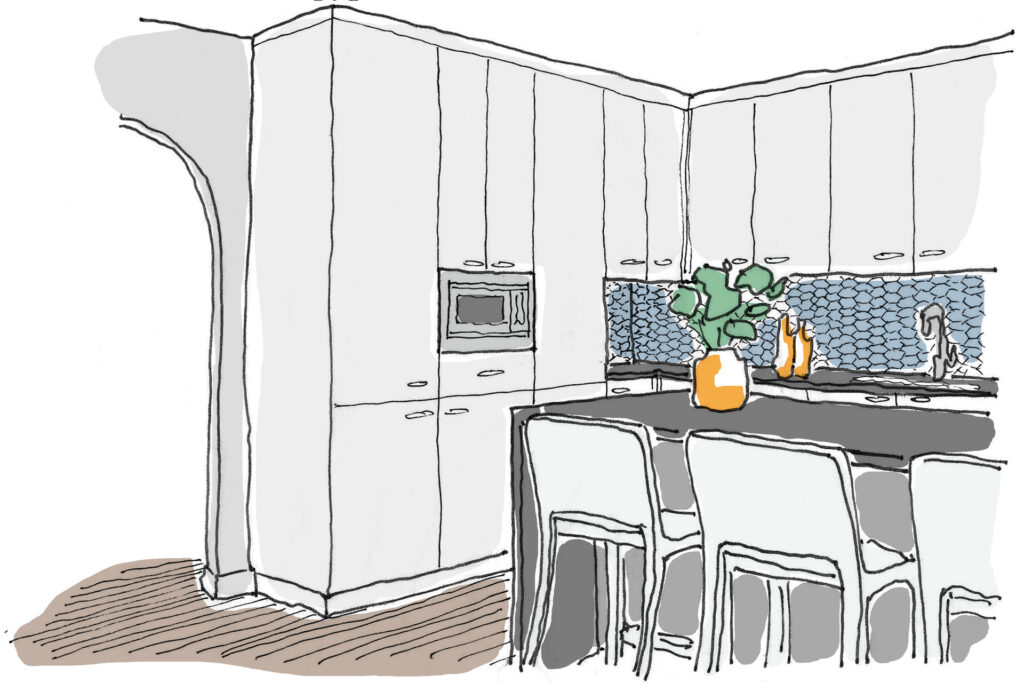
It is important to note that microwave ovens designed for use with a trim kit will not fit in standard 13” deep upper cabinets. Several available models fit in 16” or 18” deep cabinetry, but most need 24” of depth.
Microwaves designed for use with a trim kit are typically 21” wide. However, the matching trim kit from the microwave’s manufacturer is either 27” or 30” wide, since they are often installed over a standard 27” or 30” wide wall oven. If you want to install a microwave with trim kit in a space less than 27″, you can get a third-party trim kit from EuroTrim, as small as 24” wide.
Microwave oven drawer
For clients who have space below a countertop, a microwave oven drawer is often the perfect solution. These units look like a built-in microwave, but instead of a door that hinges, a ‘drawer’ slides out, allowing access from above. The control panel is on the top edge of the drawer, making these units extremely easy to access and use. Further, since they are built-in, they have a seamless aesthetic.
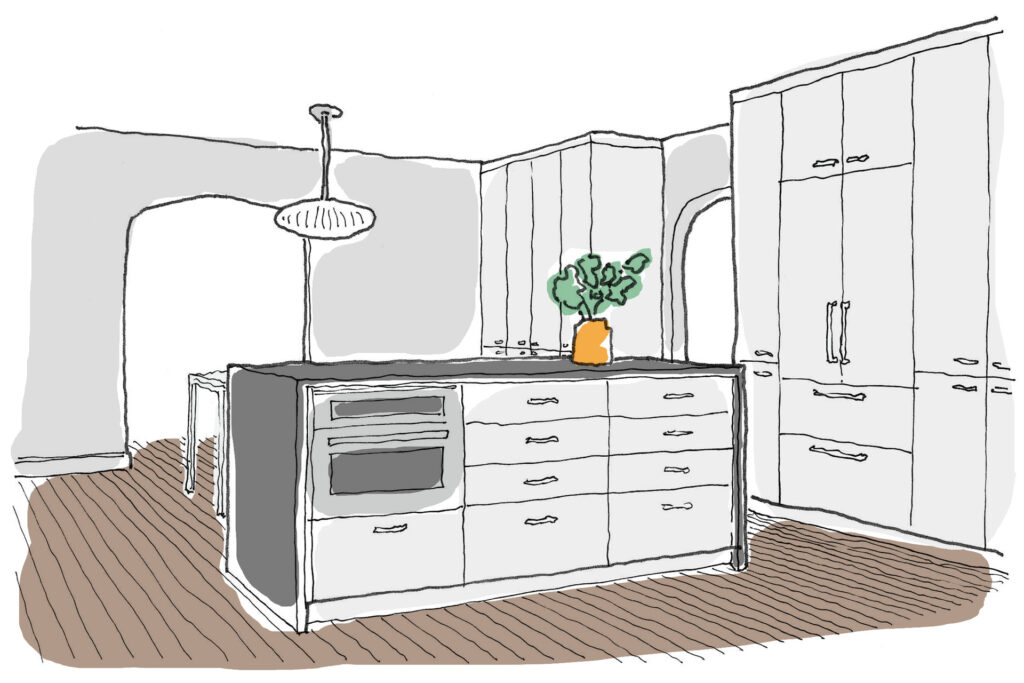
Microwave oven drawers utilize a different type of technology than traditional microwaves. While a traditional microwave relies on a turntable to evenly cook your food, a microwave drawer uses an ‘inverter,’ which bounces the microwaves around without the need for a turntable. This results in a gentler ‘cook’ than a traditional microwave oven. According to Berg, “They can bring a stick of butter to room temperature without melting it, every time.”
Microwave drawers come in both an exterior width of 24” and 30”. However, both units are the same size on the interior. The only time it makes sense to specify a 30” wide model is if you’re stacking it below a 30” wide wall oven.
At CA, we recommend microwave drawers more than any other type of microwave, simply because they fit well in almost any kitchen. It is a great way to get the microwave off the counter, yet still keep it close by. We often put microwave drawers in kitchen islands, tucked out of site but easily accessible to the cook.
You can see an example of a microwave drawer in our Hayhurst Mid-Century project.
All microwaves are ‘kind of’ the same.
According to Berg, “All microwaves sold in the US are made by the same two manufacturers. Just because they have a ‘high end’ label on them, doesn’t mean they were made by that manufacturer.”
Microwaves have a limited lifespan and are usually less expensive to throw away than repair. It’s good to know that just because one model is more expensive than another, doesn’t mean it has better components or will last longer.
How does Christie Architecture help with selecting a microwave oven?
First and foremost, we work with you to establish the best layout for your kitchen based on your space and your needs. We then show you options for microwave locations. We don’t pick it for you, but give you guidance about which type and size best works in your space. Then, we’ll send you to someone like Berg at Eastbank to choose the specific make and model, because only you know what will best support your lifestyle.
Based on your selection, we then think about the whole picture. We coordinate the locations of all your appliances and make sure there are no conflicts—between appliances, the swing of appliance doors, adjacent walls and cabinetry. We make sure you can access the microwave whether it is a simple countertop model or a built-in drawer type. If you can’t fully open the door, or if that door swings in the wrong direction, you won’t be happy.
Ready to explore microwave options for your next remodel?
Buying a countertop microwave for your first apartment was likely a simple task. Selecting one for your kitchen remodel may present more challenges. Don’t feel overwhelmed. Give us a call so we can walk you through the process and get you one step closer to your dream kitchen.
